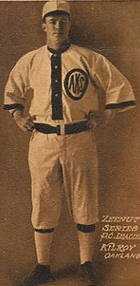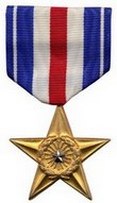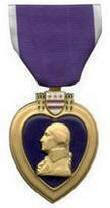Orville Kilroy
| Date and Place of Birth: | May 19, 1879 New Richmond, WI |
| Date and Place of Death: | October 9, 1918 Argonne Forest, France |
| Baseball Experience: | Minor League |
| Position: | Pitcher |
| Rank: | Private First Class |
| Military Unit: | Company A, 3rd Machine Gun Battalion, 1st Division AEF |
| Area Served: | France |
Orville Kilroy was an outstanding pitcher but bad luck seemed to follow him everywhere, even on the battlefields of France.
Orville P. Kilroy was born May 19, 1879 in New Richmond, Wisconsin. A
quiet, unassuming and stockily built pitcher with great endurance, he
would often pitch both ends of a doubleheader. Kilroy began his baseball
career with the Waterloo Microbes of the Class D Iowa League, also
playing with the Superior Longshoremen of the Class D Northern League
and the St. Paul Saints of the Class A American Association.
In 1905, hurling for St. Paul and Kansas City of the American
Association he lost 20 games while winning just 9, not helped by a run
of bad luck as described by the Minneapolis Tribune:
"When a pitcher holds a team down to five hits, three of them scratches
and is backed up by excellent support and still can't win out, it shows
that the hoodoo is there stronger than onions. And that is what happened
to Orville Kilroy yesterday for about 'steenth time since he has broken
into the league. It is generally acknowledged around the circuit that
‘Kil’ is the hard luck pitcher of the league and for that reason
yesterday's result cannot be called a surprise. Kilroy has carried
rabbit feet (procured under most solemn conditions), has fought shy of
all bad omens of the baseball world, never walks under a ladder standing
against a building, never puts his bat in the bag upside down, and, in
fact, does everything to keep the ill fates from disturbing him but all
to no avail. The Jonah man has followed him so long that Kilroy has come
to regard his presence as a matter of course, and did he possess less
nerve would have thrown up the sponge long ago. But as it is, this
sterling young pitcher plays the game all the time and for all that is
in it, with the hope that luck will sometime come his way. And if it
does, look out for him.
"Kilroy had the Colonels going in the one, two, three order until the
sixth when one managed to get on a base. But it was in the last part of
the ninth that the work was done. Danny Kerwin, the first man up, hit a
fast one to Kilroy, which the latter touched and steered off in the
direction of Marcan. Art got it, but Kerwin beat it out by a few inches.
Suter Sullivan bunted along the first base line, Kilroy picked the ball
up, but the throw hit Sullivan on the shoulder, the ball going to right
field and Kerwin rounding up at third. With two on bases and nobody
gone, Scott stepped up to the plate and smashed the second ball pitched
against the center field fence, and it was all over."
In 1906, with the Minneapolis Millers of the same league, he was 12-12
and won 19 games for the Millers the following year although bad luck
still appeared to be pursuing him. After earning both wins against
Toledo in a July 14 double-header he got involved in a fight and had a
knife pulled on him, injuring both hands.
However, he was just 2-8 with the Toronto Maple Leafs of the Class A
Eastern League in 1908, finishing the year with the Scranton Miners of
the Class B New York State League. He was back with St. Paul in 1909 and
raised his record to 14-10, followed by a 5-8 record the following year.
In 1911, Kilroy headed to California to pitch for the Oakland Oaks of
the Class A Pacific Coast League, compiling an 8-13 record and 2.66 ERA.
In 1912, he played for Taft and the Bakersfield Drillers of the San
Joaquin Valley League, played winter ball for K.T & O club of the West
Side League in Bakersfield, and spent the 1913 season with the Valley
League Bakersfield and Madera clubs.
Kilroy returned to the Pacific Coast League in 1914, hurling two games
for Sacramento, his last season in organized baseball.
Living in Porterville, California, Kilroy was beyond draft age in 1917
but enlisted in the Machine Gun Company, 2nd Infantry, North Dakota
National Guard, at Dickinson, North Dakota, on July 14, 1917. On
December 15, 1917, he sailed for Europe and was assigned to Company A,
3rd Machine Gun Battalion of the 1st Division on January 15, 1918. He
was involved in fierce fighting against German forces in France at
Montdidier-Noyon, Aisne-Marne, St. Mihiel, Meuse-Argonne, Ansauville,
Saizerais and Cantigny. He was badly wounded in June1918 but insisted on
returning to his machine gun unit. Private First Class Kilroy was killed
in action at Argonne Forest on October 9, 1918.
Kilroy was twice cited in General Orders: (General Orders No. 94,
Headquarters, 1st Division, AEF, Germany, Dec. 13, 1918) Although sick,
he insisted upon staying with his company and was mortally wounded while
faithfully and courageously performing his duty. (General Orders No. 1,
Headquarters, 1st Division, Camp Zachary Taylor, Ky., Jan. 1, 1920) For
gallantry in action and especially meritorious services. Entitled to
wear two silver stars.
Originally buried in France, his remains were returned to the United
States in 1921 and buried at St. Anne’s Cemetery in Porterville,
California.
Sources
Bakersfield Californian, Dec 3, 1912, Dec 3, 1918
Bakersfield Morning Echo, Jan 8, 1913, March 29, 1913
Chicago Star, Aug 15, 1907
Des Moines Daily News, Dec 10, 1918
Milwaukee Sentinel, Dec 9, 1918
Pocahontas County Sun, June 10, 1909
Waterloo Daily Reporter, Aug 23, 1905
Waterloo Evening Courier, Aug 26, 1910
Date Added June 10, 2012
Baseball's Greatest Sacrifice is associated with Baseball Almanac
Baseball's Greatest Sacrifice is proud to be sponsored by



